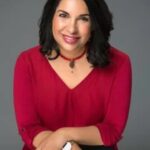by Teresa E. Jacobs, MD

Patients enter the evaluation for sleep apnea from four primary sources: subjective symptoms, complaints of a bed partner, concerns of a doctor, or the observations of a dentist. Patients put off coming in for evaluation because they are apprehensive about spending a night in the laboratory. With increasing frequency, medical insurance companies require that the first assessment for sleep apnea be a home sleep apnea test (HSAT), which often helps patients agree to start the process when advised of this by the referring doctor or dentist. It can also be reassuring to the patient to know that using a sleep aid for testing may be possible without affecting the test results.
Another reason that patients delay coming in for evaluation is the fear that they may actually have sleep apnea and that the sleep physician will only recommend CPAP therapy. It is helpful for me when a patient knows that both their dentist and I would consider an oral appliance as primary treatment. It is also helpful if the dentist can encourage CPAP treatment when the clinical circumstances support that initial approach, such as in severe sleep apnea with co-existing cardiac conditions.
When an oral appliance is used as primary therapy, it is important for the patient to adjust the device at home prior to having follow up testing, whether the test is at home or in the laboratory. The most successful laboratory device titrations happen after the patient had protruded the jaw maximally but still with nightly comfort so we can minimize the number of awakenings.
Whether follow up testing is done at home or in the laboratory, technician scoring is preferred over automatic scoring because additional information can be gleaned from the raw data. Heart rate variability, which is not described in autoscored summary data, can suggest other disorders with cortical arousals, such as periodic limb movement disorder (PLMD), a motor condition related to restless legs syndrome.
I have managed many patients with obstructive sleep apnea treated with an oral appliance. In some, while snoring and sleep at night improved, daytime sleepiness did not. In one recent patient, a laboratory sleep study with further titration of the appliance improved OSA control during REM sleep and identified significant periodic limb movement disorder (PLMD) causing cortical arousals. When the PLMD was treated, daytime sleepiness resolved. While follow up testing with the appliance is recommended for the vast majority of patients to document the efficacy of OSA treatment, residual symptoms are important reasons to urge follow up with the sleep physician.
When an oral appliance is inadequate to control OSA, what happens next depends on several factors: the severity of the residual sleep apnea, the presence of significant medical comorbidities, and patient preference. Combination treatment with ENT surgery can improve residual apnea and snoring. When sleep apnea remains moderate to severe with the oral appliance in the optimal position, especially if there are significant medical concerns, I would recommend that the patient consider using CPAP with the OAT, the combination of which may be more tolerable because treatment pressures might be lower. The Inspire nerve stimulation therapy, a new approach which uses a pacemaker relay to stimulate the tongue to contract forward with the start of each breath, may also be an option when moderate to severe apnea persists.
Ultimately, the goal is for a patient to have a treatment that they can use reliably with good results. I aim to provide patients with information on all therapeutic options and guidance to find their personal optimal treatment for OSA. I rely on my dental colleagues to help identify patients at risk, provide a treatment option with good instruction, and monitor patients for dental complications of treatment. When symptoms do not resolve with OAT, this does not mean automatically resuming CPAP, but should lead to a discussion of possible approaches, including the investigation for a secondary sleep diagnosis.
Stay Relevant With Dental Sleep Practice
Join our email list for CE courses and webinars, articles and more..





